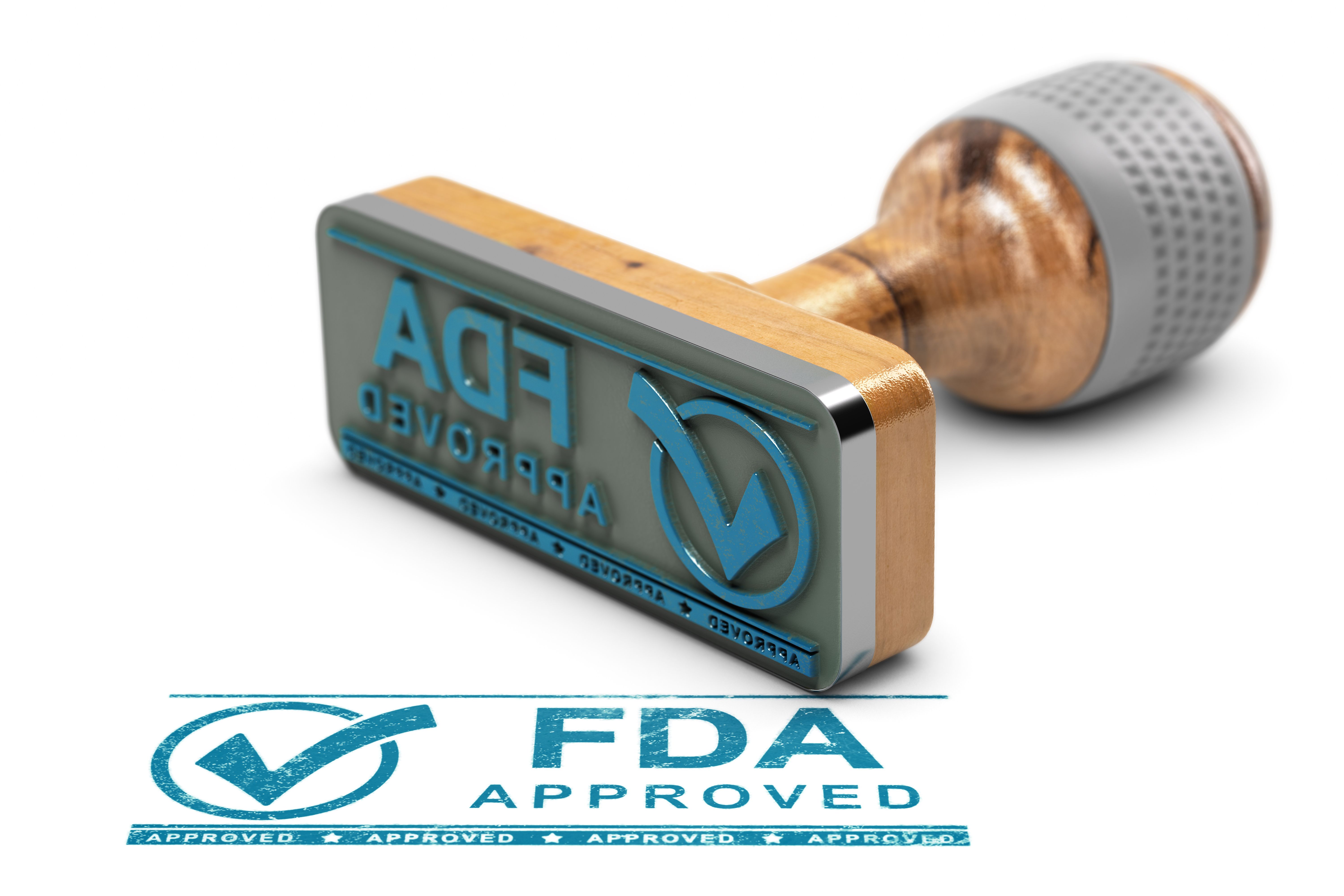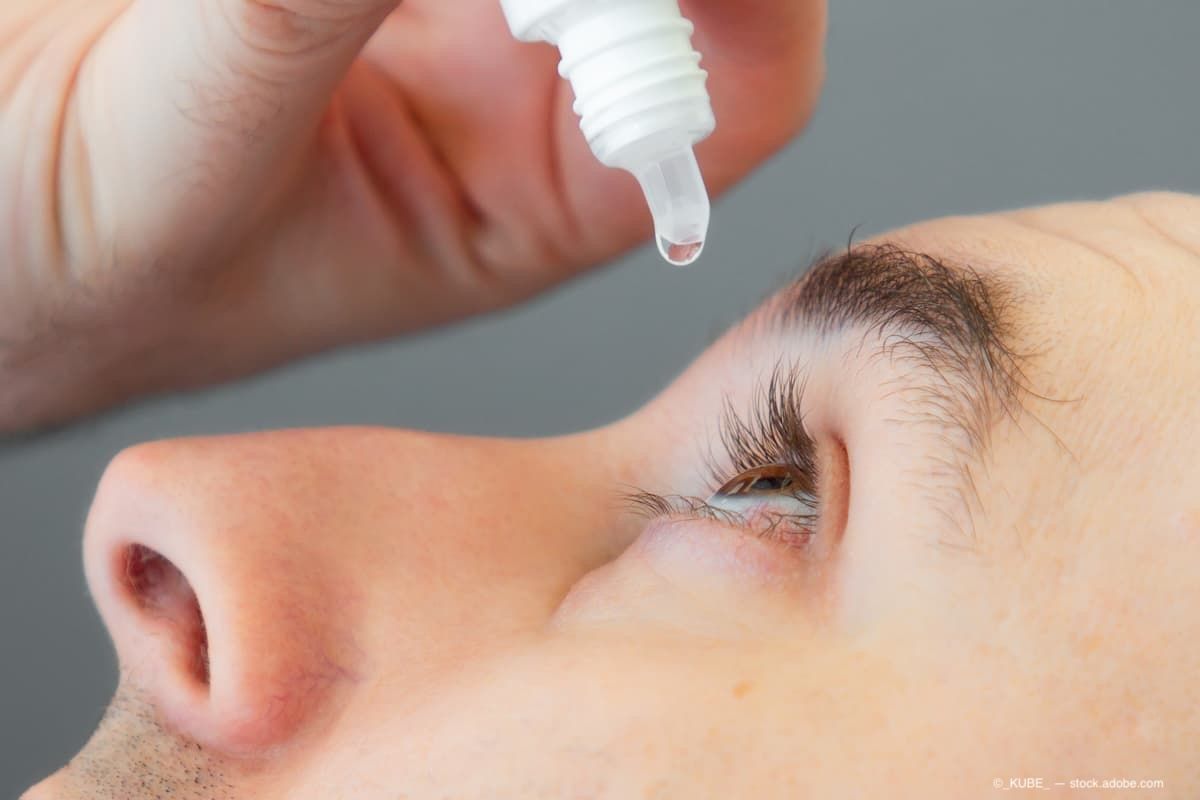Article
Bausch + Lomb, Novaliq announce FDA approval of perfluorohexyloctane ophthalmic solution for treatment of dry eye disease
Author(s):
According to the companies, MIEBO is the first and only prescription eye drop approved for dry eye disease that directly targets tear evaporation, based on consistent results from a pair of pivotal Phase 3 trials.
According to the companies, perfluorohexyloctane ophthalmic solution is the first and only FDA-approved treatment for DED that directly targets tear evaporation. (Image courtesy of Adobe Stock)

Bausch + Lomb Corp. and Novaliq GmbH today announced that the FDA has approved perfluorohexyloctane ophthalmic solution, formerly known as NOV03 (MIEBO), for the treatment of the signs and symptoms of dry eye disease (DED).
According to the companies, perfluorohexyloctane ophthalmic solution is the first and only FDA-approved treatment for DED that directly targets tear evaporation.
“Today’s FDA approval of MIEBO further advances DED treatment by addressing a significant unmet need for millions of people suffering with this disease,” Brent Saunders, chairman and CEO, Bausch + Lomb, said in a news release. “We are proud to bring to market the first and only prescription eye drop approved in the United States for the treatment of DED that directly targets evaporation. We expect to make MIEBO commercially available in the second half of this year.”
According to a news release, DED affects millions of Americans and is one of the most common ocular surface disorders.1 A leading cause of DED is excessive tear evaporation, which due to an altered tear lipid layer, is often associated with the clinical signs of Meibomian gland dysfunction (MGD). An unstable tear film triggers increased ocular surface desiccation, inflammation and damage to the ocular surface.2,3 Perfluorohexyloctane ophthalmic solution is designed to reduce tear evaporation at the ocular surface.4,5
The companies noted that in GOBI and MOJAVE, two phase 3 pivotal clinical trials which enrolled more than 1,200 patients (randomized 1:1 to perfluorohexyloctane ophthalmic solution or hypotonic saline) with a history of DED and clinical signs of MGD, perfluorohexyloctane ophthalmic solution consistently met its primary clinical sign and patient-reported symptom endpoint.
"In the two pivotal clinical trials, MIEBO addressed the persistent and chronic nature of DED by providing sustained improvement in both the signs and symptoms of DED,” Preeya Gupta, MD, a cornea and cataract surgeon at Triangle Eye Consultants in Raleigh, North Carolina, said in a statement. “Because MIEBO inhibits evaporation, it may be an appropriate treatment option for patients whose tear evaporation exceeds tear supply.”
Clinical Data
The FDA approval of perfluorohexyloctane ophthalmic solution was based on results from two 57-day, multi-center, randomized, double-masked, saline-controlled studies, GOBI and MOJAVE, which enrolled a total of 1217 patients with a history of DED and clinical signs of MGD,6,7 a major cause of development and disease progression.8 An estimated 86% of people with DED have excessive tear evaporation whereby MGD is the major contributor.9,10
In the GOBI and MOJAVE phase 3 pivotal studies, perfluorohexyloctane ophthalmic solution met both primary sign and symptom efficacy endpoints. The two primary endpoints were change from baseline at week eight (day 57 ± 2) in total corneal fluorescein staining (tCFS) and eye dryness Visual Analog Scale (VAS) score. Patients experienced relief of symptoms as early as day 15 and through day 57 with statistically significant reduction in VAS eye dryness score favoring perfluorohexyloctane ophthalmic solution observed in both studies. Additionally, at days 15 and day 57, a significant reduction in tCFS favoring perfluorohexyloctane ophthalmic solution was observed in both studies.
The most common adverse reactions experienced with perfluorohexyloctane ophthalmic solution were blurred vision (1.3-3%) and eye redness (1-3%).
“Today’s FDA decision marks a tremendous milestone for Bausch + Lomb as MIEBO becomes our first prescription pharmaceutical eye treatment to be approved by the FDA since becoming an independent, publicly traded eye health company,” Andrew Stewart, president, Ophthalmic Pharmaceuticals, Bausch + Lomb, said in a statement. “We are proud to further deliver on our promise to bringing innovative new options to help patients improve their treatment journey.”
Yehia Hashad, MD, executive vice president, Research & Development and chief medical officer, Bausch + Lomb, lauded the company’s commitment.
“Bausch + Lomb is deeply committed to bringing forward medicines that address unmet medical needs, and MIEBO is a prime example of this commitment being realized,” Hashad said in a statement. “We are extremely grateful to all of our collaborators, including trial patients, clinical investigators and our R&D team, for their tireless contributions to this important milestone.”
“We believe that MIEBO will address a significant unmet need for the many Americans who struggle with evaporative dry eye,” Christian Roesky, PhD, CEO of Novaliq, said in a statement. “We are grateful to Bausch + Lomb for their continued collaboration in bringing this unique new treatment option to market.”
About NOV03
According to the companies, NOV03 is an investigational, proprietary, water-free, single-component preservative-free eye drop. In 2019, Bausch + Lomb acquired an exclusive license for the commercialization and development of NOV03 in the United States and Canada. Results from the pivotal Phase 2 trial (SEECASE) were published in Cornea in September 2021.
Data from the first pivotal Phase 3 trial (GOBI) were presented at the American Society of Cataract and Refractive Surgery (ASCRS) annual meeting in Washington, D.C. on April 24, 2022. Data from the second pivotal Phase 3 trial (MOJAVE) were presented at the Association for Research in Vision and Ophthalmology (ARVO) annual meeting in Denver on May 2, 2022. The clinical program for NOV03 concluded with the completion of a multi-center, open-label, single-arm, 12-month safety extension trial (KALAHARI).
In September 2022, Bausch + Lomb and NOV03 announced that the U.S. FDA had accepted the NDA filing for NOV03 and assigned a PDUFA action date of June 28, 2023.
References
- National Eye Institute. Dry Eye. Last updated April 8, 2022. Accessed May 2, 2023. https://www.nei.nih.gov/learn-about-eye-health/eye-conditions-and-diseases/dry-eye
- Craig JP, Nelson JD, Azar DT, et al. TFOS DEWS II report executive summary. Ocul Surf. 2017;15(4):802-812. doi:10.1016/j.jtos.2017.08.003
- Pflugfelder SC, Paiva CS. The pathophysiology of dry eye disease: what we know and future directions for research. Ophthalmology. 2017;124(suppl 11):S4-S13. doi:10.1016/j.ophtha.2017.07.010
- Nichols KK, Foulks GN, Bron AJ, et al. The international workshop on Meibomian gland dysfunction: executive summary. Invest Ophthalmol Vis Sci. 2011;52(4):1922-1929. doi:10.1167/iovs.10-6997a
- Borchman D, Vittitow J, Ewurum A, Veligandl SR. Spectroscopic study of perfluorohexyloctane human Meibum interactions. Invest Ophthalmol Vis Sci. 2022;63:1525.
- Tauber J, Berdy GJ, Wirta DL, et al. NOV03 for dry eye disease associated with meibomian gland dysfunction: Results of the Randomized Phase 3 GOBI Study. Ophthalmology. 2023;130(5):516-524. doi:10.1016/j.ophtha.2022.12.021
- Sheppard J, Kurata F, Epitropoulos AT, et al. NOV03 for signs and symptoms of dry eye disease associated with meibomian gland dysfunction: The randomized phase 3 Mojave study. American Journal of Ophthalmology. Published online ahead of print. March 20 2023. doi:10.1016/j.ajo.2023.03.008
- Chhadva P, Goldhardt R, Galor A. Meibomian Gland Disease: The Role of Gland Dysfunction in Dry Eye Disease. Ophthalmology. 2017;124(11S):S20-S26. doi:10.1016/j.ophtha.2017.05.031
- Findlay, Q., & Reid, K. (2018). Dry eye disease: when to treat and when to refer. Australian prescriber, 41(5), 160-163. https://doi.org/10.18773/austprescr.2018.048
- Lemp, MA, Crews, LA, Bron AJ. (2012). Distribution of Aqueous-Deficient and Evaporative Dry Eye in a Clinic-Based Patient Cohort: a retrospective study. Cornea, 31(5), 472-478. 2012;31(5):472-478. doi:10.109/ICO.0b013e318225415a.
Newsletter
Don’t miss out—get Ophthalmology Times updates on the latest clinical advancements and expert interviews, straight to your inbox.




